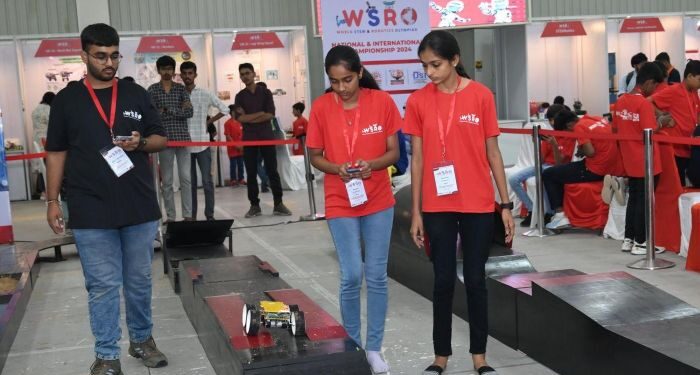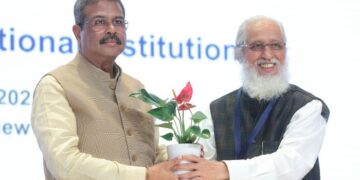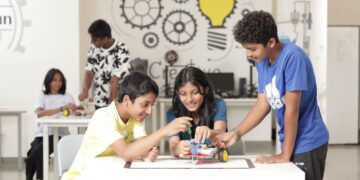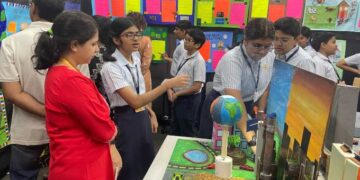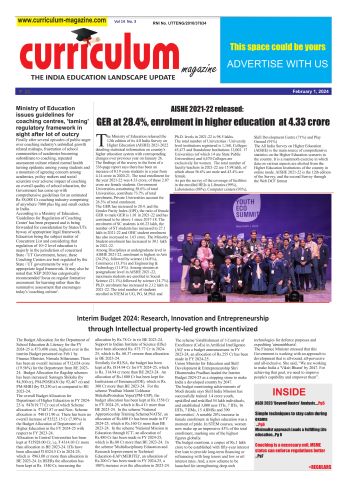By Gopal Maheshwari
Science empowers us to delve into the natural world’s mysteries, enabling us to unravel basic phenomena and the intricacies of complex ecological systems. Technology relentlessly transforms our everyday experiences, from the convenience of smartphones to the innovation of smart homes that enhance our productivity and comfort.
On the other hand, engineering tackles a broad spectrum of challenges, ranging from designing and constructing essential infrastructure like roads and bridges to addressing critical global issues such as climate change and developing sustainable energy solutions. Mathematics is the foundation that governs countless professions and activities, from the practical management of household budgets to the sophisticated analysis of vast datasets that drive decision-making in various fields.
STEM, an acronym for science, technology, engineering, and mathematics, embodies four essential disciplines that intricately weave through every aspect of our contemporary lives.
STEM learning
Beginning STEM education in elementary school establishes a vital foundation for lifelong learning and success. Modern Science, Technology, Engineering, and Math programs integrate multiple subjects to show how these concepts foster a passion for these fields from an early age. To achieve this, we need to be open-minded about incorporating engaging and educational games that promote the learning of STEM in children.
By introducing students to the captivating realms of science, technology, engineering, and mathematics, we ignite their curiosity and encourage exploration of these dynamic fields. This enriched curriculum incorporates real-life scenarios that facilitate meaningful learning experiences. STEM activities engage students with hands-on and mind-on lessons, effectively blending fun with education. Making math and science enjoyable fosters a deeper understanding and inspires students to pursue careers within these vital disciplines, shaping the innovators and analytical people of tomorrow.
It is essential for Indian students, particularly the youth, to be observant of the diverse opportunities that STEM education can provide, as these can significantly enhance their growth on international platforms. Today, numerous affordable options are available for pursuing STEM education through various dedicated institutions, enabling students to advance their knowledge and skills in this critical field.
In a world increasingly focused on technological advancement, it is beneficial to view STEM as essential pillars of economic development and research advancement. It is in the national interest to dedicate resources to infrastructure, enhance teachers’ capabilities, and foster collaboration with industry associations to boost STEM learning in India.
STEM education plays a vital role in the socio-economic upliftment of society at all levels. For example, our Unified Payments Interface (UPI) illustrates how developing information technology capabilities and understanding the challenges of implementing such frameworks have revolutionized digital transactions.
Focus areas in STEM
As we look toward the vision of Viksit Bharat by 2047, it is crucial to recognize the importance of strengthening our scientific and technological capabilities by empowering our youth across various sectors, such as agriculture, industry, research and development, space, nuclear energy, and renewable energy transitions. Fostering an interest in STEM (Science, Technology, Engineering, and Mathematics) from an early age is vital for national development.
India must focus on advancements in AI, robotics, quantum computing, energy production, and carbon credits to develop strong human capabilities and transition into a developed nation. While these fields represent cutting-edge technology, it is essential to balance them with a humane approach in STEM education. As Sir C. V. Raman once said, “The beauty of science lies in its ability to make the complex simple and the human familiar.” Youth should aim to provide solutions that can be widely adopted and that benefit the entire socio-economic spectrum.
Conclusion
In pursuing scientific temperament, we must also balance our humanities and the values of Vasudhaiva Kutumbakam (the world is one family) to ensure growth reaches even the last person standing at the corner of our nation. A report by the World Economic Forum in 2023 identified creativity as one of the top three skills needed for future jobs. Therefore, the ability to think creatively enables individuals to approach problems from different perspectives, leading to innovative solutions that may not arise through traditional STEM disciplines alone. Let’s keep that in mind while pursuing STEM rigorously in our institutions.


